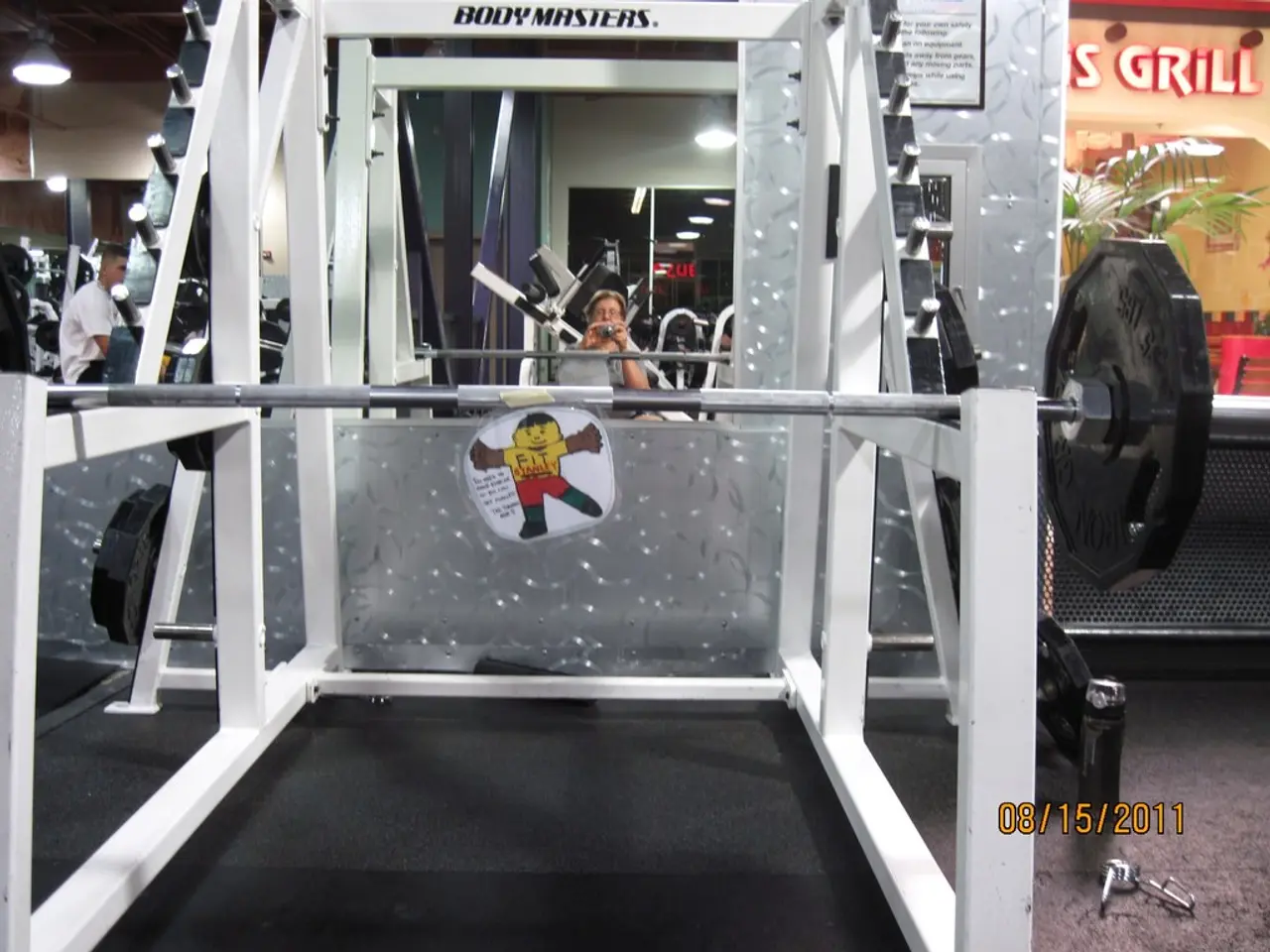Deadlifts predominantly target the hamstrings, glutes, and back muscles, with variations offering additional focus on other muscle groups. Here's a guide on different deadlift types and techniques.
Deadlifts are a popular exercise in strength training, known for their ability to target multiple muscle groups and improve overall athleticism. In this article, we'll explore the benefits of deadlifts, their correct form, and key tips for safe and effective deadlifting.
First, let's delve into the benefits of deadlifts. By increasing muscle mass, deadlifts can boost a person's metabolism, leading to an enhanced calorie burn even at rest. Moreover, the exercise puts healthy stress on bones, leading to increased bone density and a reduced risk of injury. Deadlifts also help train the back and shoulder muscles to work together, improving posture.
Strength training, including deadlifts, has been shown to reduce stress and anxiety, making it an excellent addition to any fitness routine. Furthermore, deadlifts are beneficial for building muscle in the upper and lower body, making them an ideal exercise for those looking to improve their overall strength.
Now, let's discuss the correct form for performing a deadlift. The deadlift consists of three phases: setup, pull, and lockout.
- Set your stance: Stand with feet hip-width to just under shoulder-width apart, toes slightly under the bar, and shins close to the bar. Keep your feet fully grounded, with weight mostly on the heels and middle of the feet.
- Grip the bar: Bend at the hips and knees, keeping your back straight and core braced. Grip the bar just outside your legs using a double overhand grip for beginners or mixed/hook grip for heavier lifts. Arms should stay straight and vertical to the floor.
- Position your body: Lower your hips until your butt is below the shoulders but above the knees, keeping a neutral, flat back (no rounding). Keep the chest up and shoulders over the bar, pulling your shoulder blades slightly together without excessive squeezing. Tuck your chin slightly to keep your head in line with the spine.
- Lift the bar: Inhale and brace your core tightly. Push through your heels and extend your hips and knees simultaneously to stand upright, keeping the bar close to your body. Lead the lift with your head and chest—do not hyperextend your lower back or lean backward. Squeeze your glutes at the top.
- Lower the bar: Hinge at the hips first and then bend your knees to lower the weight, maintaining a flat back and engaged core throughout. Maintain control and move up and down at a consistent speed.
Additional key tips for safe and effective deadlifting include:
- Keep the barbell close to your legs throughout the lift to reduce strain on the back.
- Keep your arms straight; do not bend or pull with your arms.
- For varied training and muscle activation, experiment with grip variations like mixed or hook grips and stance widths (conventional, sumo).
- Maintain proper posture with shoulder blades pulled down and back and chest lifted before the lift.
New lifters should focus on form first and may want to practice the motion of deadlifting with no weight before adding resistance. Beginners should start with lighter weights (e.g., kettlebells or dumbbells) to master technique before progressing to heavy barbell deadlifts.
For those seeking to build stability, balance, and core strength, the one leg, one arm dumbbell deadlift is an excellent variation.
By following these steps and tips, you can ensure proper form for muscle growth and strength while minimizing injury risk. Happy lifting!
[1] Schoenfeld, B. J. (2010). The mechanisms of muscle hypertrophy and their application to resistance training. Journal of Strength and Conditioning Research, 24(10), 2857–2872.
[2] Westcott, W. L. (2003). The science of strength training: A systematic literature review and recommendations for practical applications. Strength and Conditioning Journal, 25(4), 38–54.
[3] Stone, M. H., & Schroeder, D. (2003). The role of the hip musculature in the deadlift exercise. Journal of Strength and Conditioning Research, 17(4), 830–835.
[4] Verkhoshansky, Y. V., & Siff, M. C. (2009). Supertraining: A Guide to the Science and Practice of High-Performance Sports Training. Human Kinetics.
[5] Brunet, P. E., & Lepage, G. (2004). The effect of lifting bar position on the electromyographic activity of the lumbar erector spinae and the abdominal muscles. Journal of Strength and Conditioning Research, 18(3), 475–481.
- Strength training, with deadlifts as a key exercise, plays a significant role in weight management and health-and-wellness, as it boosts metabolism, promotes calorie burn, enhances bone density, improves posture, and reduces stress.
- Sports performance can benefit from the fitness-and-exercise routine that includes deadlifts, as the exercise builds muscle strength both in the upper and lower body, leading to increased athleticism.
- In the realm of medicine, the healing properties of deadlifts extend beyond weight management, as they help prevent injuries by improving bone health and promoting proper posture.
- The science of strength training, backed by research, supports the benefits of deadlifts, with various studies suggesting that the correct form and experimentation with grip variations can lead to effective and safe muscle growth and strength development.




